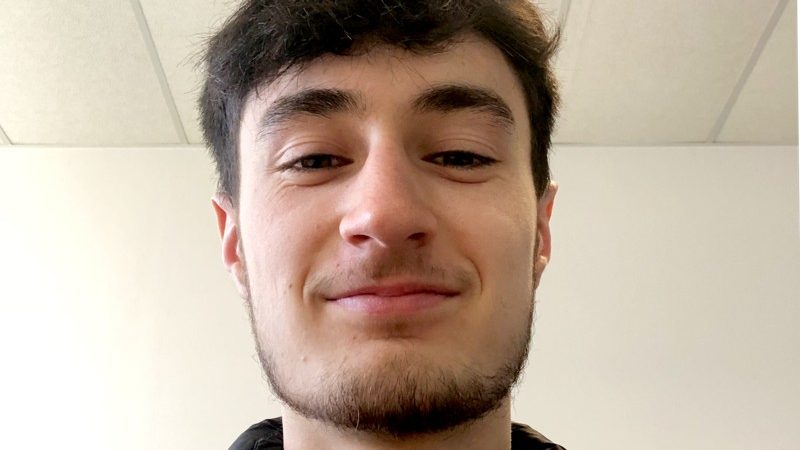“No Cap: Unveiling the Cultural Phenomenon Shaping Modern Expression”

In the dynamic landscape of contemporary language and expression, the phrase “No Cap” has emerged as a cultural phenomenon, transcending its origins in hip-hop and becoming a ubiquitous part of everyday conversation. The colloquialism, often used to convey sincerity or truthfulness, has evolved beyond its linguistic roots, reflecting broader shifts in communication styles and cultural values. This article explores the journey of “No Cap” from its origins to its present status, examining its impact on language, social dynamics, and its role in shaping modern communication.
Origins in Hip-Hop:
“No Cap” originated in the vibrant realm of hip-hop, where artists have long been influential in introducing new slang and colloquial expressions to the mainstream. The phrase itself is a shortened form of “No Cap at All” or “No Cap, No Lie,” signifying a declaration of honesty. It found its place in rap lyrics as a way for artists to emphasize the authenticity of their words, asserting that what they were saying was not an exaggeration or falsehood.
Evolution of Expression:
From its roots in hip-hop, “No Cap” quickly transcended the confines of the music genre. Young people, in particular, embraced the phrase as a versatile tool for emphasizing sincerity, dispelling doubts, or simply adding flair to their speech. Its brevity and directness make it an appealing choice for a wide range of situations, contributing to its rapid integration into everyday conversation.
Linguistic Impact:
The phrase “No Cap” has not only become a part of spoken language but has also made its mark in written communication, permeating social media platforms, messaging apps, and even formal writing. Its informal yet impactful nature has led to its adoption across various demographics, creating a linguistic bridge between generations and subcultures. In an era where language evolves rapidly, “No Cap” exemplifies the dynamic and adaptive nature of modern communication.
Social Dynamics and Authenticity:
The popularity of “No Cap” goes beyond linguistic trends; it reflects a deeper cultural shift towards valuing authenticity in human interactions. In a world saturated with curated images and carefully crafted online personas, the phrase serves as a reminder of the importance of genuine communication. Whether used in casual banter or serious discussions, “No Cap” has become a shorthand way of asserting one’s sincerity, fostering a sense of trust and transparency in conversations.
Generational Connection:
“No Cap” has become a bridge between generations, serving as a shared linguistic marker that transcends age boundaries. Younger individuals use it to connect with their peers, while older generations may adopt it to stay attuned to contemporary language trends. This intergenerational dialogue facilitated by a simple phrase exemplifies the fluidity and inclusivity of language evolution.
Cultural References:
Beyond its linguistic and social implications, “No Cap” has become a cultural reference point, permeating popular culture in various forms. Memes, gifs, and viral content often incorporate the phrase, amplifying its reach and solidifying its place in the cultural zeitgeist. Brands and marketers, quick to pick up on trends, have also embraced “No Cap” in advertising and promotional campaigns, further embedding it in the collective consciousness.
Criticism and Controversy:
As with any linguistic trend, “No Cap” has not been immune to criticism. Some argue that its overuse dilutes its original meaning, while others view it as a fleeting fad with limited substance. Despite the detractors, the phrase continues to thrive, showcasing its resilience and adaptability in the face of evolving linguistic landscapes.
Conclusion:
“No Cap” stands as more than just a linguistic trend; it is a cultural touchstone that reflects the values and communication styles of a generation. Its journey from the hip-hop scene to everyday conversation underscores the dynamic nature of language and the interconnectedness of diverse cultural influences. As we navigate an ever-evolving linguistic landscape, “No Cap” remains a testament to the power of words to shape, define, and connect us in the modern era.
: What does “No Cap” mean?
A1: “No Cap” is a colloquial expression originating from hip-hop culture. It’s a way of asserting the truthfulness or sincerity of a statement. Essentially, it means “no lie” or “no exaggeration.”
Q2: How did “No Cap” originate?
A2: The phrase “No Cap” originated in the hip-hop music scene, particularly in rap lyrics. It is a shortened form of expressions like “No Cap at All” or “No Cap, No Lie,” often used by artists to emphasize the authenticity of their words.
Q3: How is “No Cap” used in everyday conversation?
A3: In everyday conversation, “No Cap” is used to convey sincerity, truthfulness, or to emphasize the authenticity of a statement. It can be employed in various situations, from casual banter to serious discussions, making it a versatile expression.
Q4: Is “No Cap” only used by young people?
A4: While “No Cap” did gain popularity among younger generations, it has transcended age boundaries. People of different ages and backgrounds use it, showcasing its broad appeal and its role as a linguistic bridge between generations.
Q5: Can “No Cap” be used in written communication?
A5: Yes, “No Cap” has made its way into written communication, including social media, messaging apps, and even formal writing. Its brevity and directness make it suitable for various contexts.
Q6: Does the usage of “No Cap” have any social implications?
A6: Yes, the popularity of “No Cap” reflects a broader cultural shift towards valuing authenticity in communication. It serves as a tool to assert sincerity and foster trust in conversations, countering the sometimes curated nature of online interactions.
Q7: Is there any criticism of the usage of “No Cap”?
A7: Like many linguistic trends, “No Cap” has faced criticism. Some argue that its overuse may dilute its original meaning, while others see it as a passing fad. Despite this, the phrase continues to thrive and adapt to different contexts.
Q8: Can “No Cap” be considered a cultural reference?
A8: Yes, “No Cap” has become a cultural reference point, appearing in memes, gifs, and viral content. Brands and marketers have also incorporated it into advertising, solidifying its place in the cultural zeitgeist.
Q9: Does “No Cap” have any regional variations in its usage?
A9: While the phrase originated in the United States, it has transcended regional boundaries and is used globally. Its adaptability has allowed it to become a part of diverse linguistic landscapes.
Q10: Is there any proper etiquette for using “No Cap” in conversation?
A10: “No Cap” is generally used informally. While it can be used in various contexts, it’s important to be mindful of the setting and audience. In more formal situations, it might be more appropriate to use standard language.






